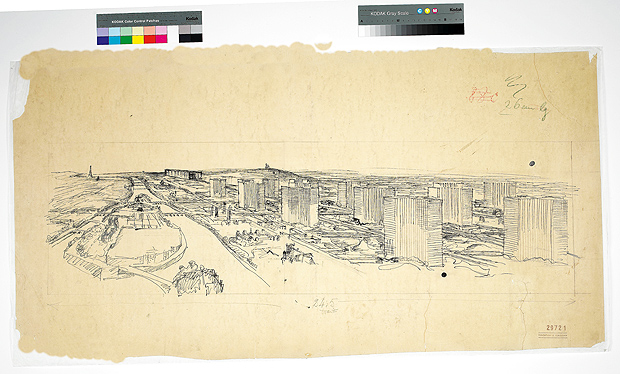
In 2005 I took part in a head-to-head debate on "the legacy of Modernist architecture" at a political conference. I was arguing "for". To my opponent, a Scottish architect, my citations of Bruno Taut and Berthold Lubetkin were irrelevant. Modernism was fundamentally about the baleful influence of one man: Le Corbusier. When he began by describing him as a "Swiss psychotic", it was obvious this was not going to be subtle.
Some will perennially blame Charles-Edouard Jeanneret for every under-serviced tower block, but the many discussions of Le Corbusier: the Art of Architecture - now at the Barbican, after a spell in Liverpool - have shown the solidification of a common-sense consensus. It is customary to divide his work into three facets - the city plans and collective blocks (mostly bad and "totalitarian"), the purist villas (good, albeit disturbingly bare and technocratic) and late expressionism, especially the Ronchamp church (unreservedly good, the work of a genius - the "Picasso of architecture"). This reflects neatly how architecture is perceived today - the Modernist notion of the architect as improver of mankind's lot is replaced by the superstar designer of three-dimensional logos. Le Corbusier was unquestionably adept at that, from the trademarked Modulor Man to the Chandigarh Open Hand, now a city emblem used as a stamp on the local driving licences.
By presenting an all-encompassing exhibition of the architect as Renaissance man, The Art of Architecture might seemingly offer a corrective to these pat divides. Here is a highly un-purist mass of stuff - models, paintings, magazines, films, chairs, found objects, plans, adverts, saucy postcards. Yet this chameleon and dialectician can't quite be united into a consistent whole, and the last thing you will find here is "development" in his work, ever progressing and refining itself (as one might in an exhibition devoted to, say, Mies). Instead there are breaks and ruptures. One would have to have absurdly catholic tastes to approve of everything, and only the most dedicated architectural neocon could hate it all. If there is any narrative here, it runs from an early immersion in a Mediterranean Classicism, to the right angles and urban visions of the 1920s, a brief flirtation with constructivism, and then from the mid-1930s onwards, an increasingly organic conception of form.
via things
|
- bill 5-03-2009 1:59 pm